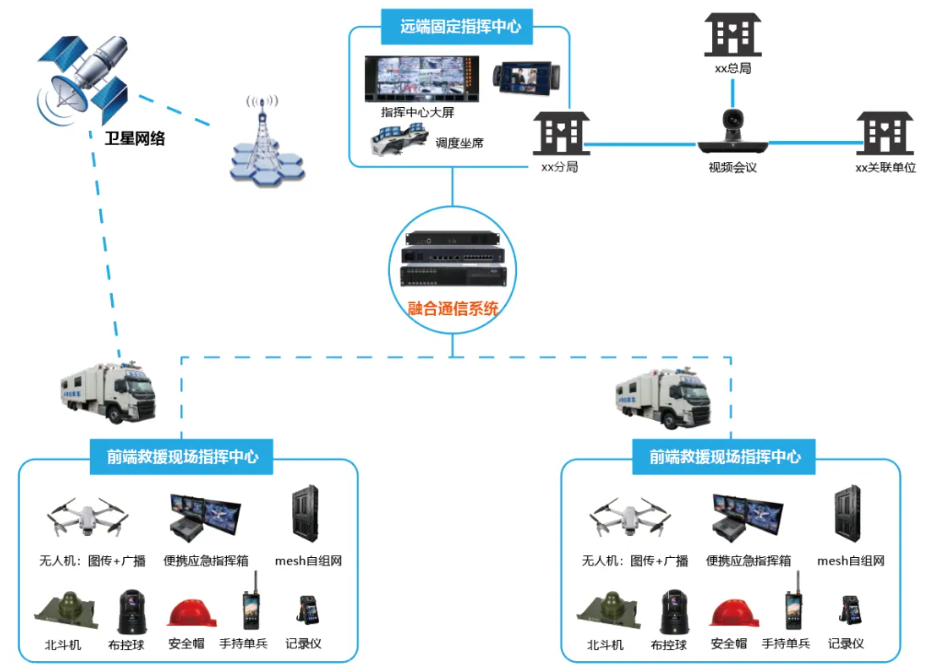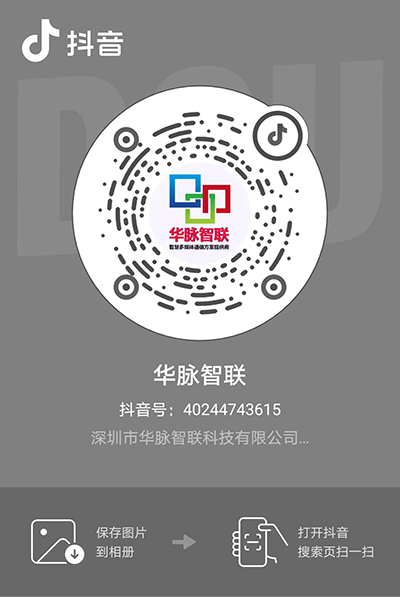Huamai Intelligent Emergency Command and Dispatch Platform + Drone Applications: Empowering Emergency Rescue with "Smart Wings"
In the face of natural disasters, accidents, and other emergencies, time is life, and efficiency is hope. Traditional emergency rescue models are constrained by bottlenecks in information acquisition, command and dispatch, and coordinated operations, making it difficult to meet the demands of modern rescue efforts. The deep integration of Huamai Intelligent Emergency Command and Dispatch Platform with drone technology provides a groundbreaking solution to these challenges, equipping emergency rescue with "smart wings" to make rescue operations faster, more precise, and more efficient!
Challenges in Emergency Rescue
1. Information Silos, Decision-Making Difficulties: Fragmented information from disaster sites and poor information sharing among departments make it hard for command centers to fully grasp the situation, affecting the scientific and timely nature of rescue decisions.
2. Communication Failures, Command Breakdowns: Disasters often damage communication infrastructure, rendering traditional communication methods ineffective and delaying the delivery of rescue instructions, hindering rescue efficiency.
3. Coordination Challenges, Low Efficiency: With multiple departments involved in rescue efforts, the lack of a unified command and dispatch platform makes it difficult to form a cohesive rescue force, impacting overall efficiency.
Huamai Intelligent Emergency Command and Dispatch Platform + Drone Applications
Huamai Intelligent Emergency Command and Dispatch Platform: Building the "Smart Brain" for Emergency Rescue
- Multi-Source Data Fusion for Comprehensive Situational Awareness: The platform integrates data from drones, satellites, ground sensors, and emergency command vehicles, generating 3D situational maps to help command centers fully understand disaster dynamics and enable precise command.
- Integrated Communication for Uninterrupted Information Flow: The platform combines wired, wireless, and satellite communication methods to create a comprehensive, all-domain emergency communication network, ensuring seamless command and control.
- Intelligent Dispatch for Efficient Resource Allocation: Based on disaster information and resource distribution, the platform intelligently generates rescue plans, optimizes resource allocation, and enables scientific and efficient coordination of rescue forces.
- Visualized Presentation for Scientific Decision-Making: Through audio and video collection, processing, and real-time image transmission, the platform presents rescue data in charts, maps, and other intuitive formats, aiding commanders in making informed decisions and improving rescue efficiency.
- Video Conferencing for Remote Collaboration: The platform integrates video conferencing gateways to connect frontline rescue scenes with remote command centers, enabling "zero-distance" communication and enhancing collaborative efficiency.

Drones: The "Airborne Vanguard" of Emergency Rescue
- Rapid Reconnaissance and Precise Positioning: Drones can quickly reach disaster sites, conduct comprehensive aerial reconnaissance, and transmit high-definition images and videos in real time, helping command centers rapidly assess the situation and locate affected areas and trapped individuals.
- Material Delivery, Lifeline Support: In cases of road blockages or communication failures, drones can deliver food, medicine, and rescue equipment to affected populations, opening critical lifelines.
- Communication Relay, Information Bridge: Drones equipped with communication relay devices can quickly establish emergency communication networks in disaster zones, ensuring uninterrupted command and control.
- Assisted Rescue, Enhanced Efficiency: Drones equipped with lighting and loudspeakers can assist rescue teams in nighttime or complex environments, improving search and rescue efficiency.
Application Scenarios
1. Natural Disaster Rescue: After earthquakes, floods, or landslides, drones can quickly conduct reconnaissance, search, and delivery missions, while the platform enables unified command and dispatch to improve rescue efficiency.
2. Accident and Disaster Rescue: Following fires, explosions, or traffic accidents, drones can perform reconnaissance, monitoring, and search tasks, with the platform ensuring smooth rescue operations.
3. Public Safety Incident Management: In cases of mass incidents or terrorist attacks, drones can monitor scenes, assess situations, and track targets, while the platform assists relevant departments in coordinated responses.
Empowering Technology to Build a Smart Emergency Rescue System
- More Powerful Drones: Future drones will feature longer endurance, greater payload capacity, and stronger environmental adaptability, enabling them to handle more complex rescue missions.
- Smarter Platform Functions: The platform will integrate advanced AI algorithms for disaster prediction, risk assessment, and intelligent decision-making, providing robust intellectual support for rescue operations.
- Broader Application Scenarios: The Huamai Intelligent Emergency Command and Dispatch Platform + drone applications will be used in a wider range of emergency scenarios, making greater contributions to safeguarding lives and property.
The Huamai Intelligent Emergency Command and Dispatch Platform + drone applications represent a vivid example of technology empowering emergency rescue, providing strong support for building a smart emergency rescue system. With continuous technological advancements and deeper applications, this integration will play an increasingly important role in emergency rescue, making greater contributions to protecting lives, property, and social stability!


 scan
scan
 15818654305
15818654305
 Room 436, Building 51, Qiongyu Road, Yuehai Street, Nanshan District, Shenzhen City, Guangdong Province
Room 436, Building 51, Qiongyu Road, Yuehai Street, Nanshan District, Shenzhen City, Guangdong Province


